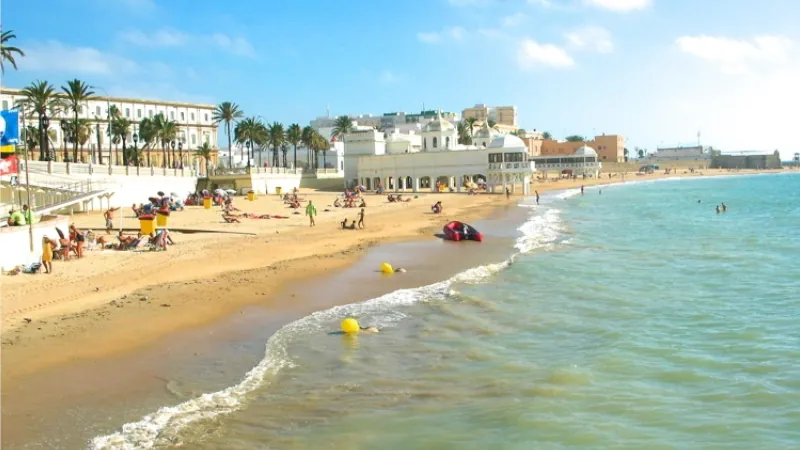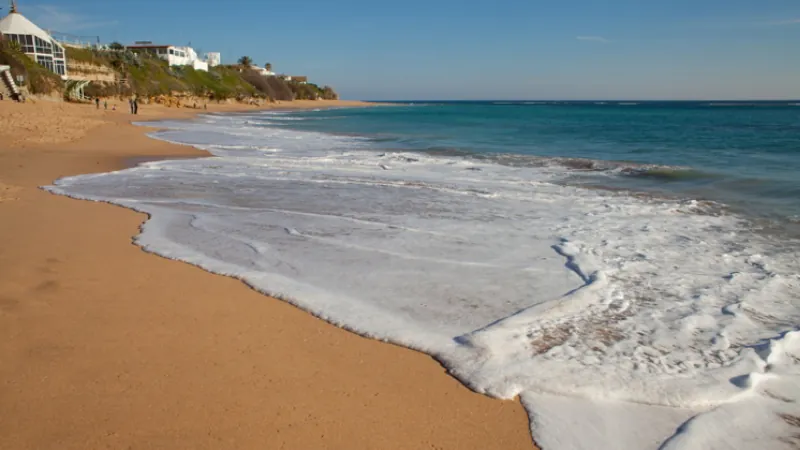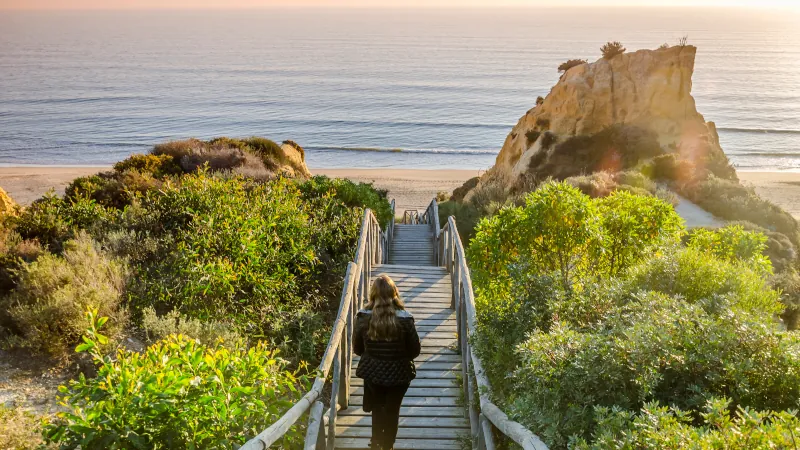7 European Countries It’s Easy To Retire To
When it comes to moving overseas, the ability to acquire long-term residency is one of the first considerations you need...
Top Destinations:
Whether you’re looking for fun and sun, a peaceful retirement, or the chance to earn some extra income, you’ve got a real world of opportunity open to you… In short, we’ve done our best to narrow down your best options, but only you can decide the right country for you.
Best For:
How Much Will It Cost You To Live Overseas?
The only honest answer is, we have no idea. And neither does anyone else. The only one who can answer that question is you. Here’s the most important thing to understand about budgeting your new life overseas…
Follow Us:
Upcoming Events
Live and Invest In Spain Conference
Offshore Wealth Summit
Greece Workshop
VALENCIA, SPAIN
Sep. 17-19, 2025
PANAMA CITY, PANAMA
Oct. 15-17, 2025
VIRTUAL
Nov. 13, 2025
Contact Our Events Team
Reach us with your questions by email at: events@liveandinvestoverseas.com
Unlock The World
Overseas Havens Reports
Conference Kits
Lahardan Books
Our Customer Service team is here to assist with any questions or concerns CustomerService@LiveandInvestOverseas.com
Top Destinations:
Whether you’re looking for fun and sun, a peaceful retirement, or the chance to earn some extra income, you’ve got a real world of opportunity open to you… In short, we’ve done our best to narrow down your best options, but only you can decide the right country for you.
Best For:
How Much Will It Cost You To Live Overseas?
The only honest answer is, we have no idea. And neither does anyone else. The only one who can answer that question is you. Here’s the most important thing to understand about budgeting your new life overseas…
Follow Us:
Upcoming Events
Live and Invest In Spain Conference
Offshore Wealth Summit
Greece Workshop
VALENCIA, SPAIN
Sep. 17-19, 2025
PANAMA CITY, PANAMA
Oct. 15-17, 2025
VIRTUAL
Nov. 13, 2025
Contact Our Events Team
Reach us with your questions by email at: events@liveandinvestoverseas.com
Unlock The World
Overseas Havens Reports
Conference Kits
Lahardan Books
Our Customer Service team is here to assist with any questions or concerns CustomerService@LiveandInvestOverseas.com

We Value Your Privacy! We will not share your email address with anyone else, period.
Home » Best Countries To Live, Invest, And Retire Overseas » Europe » Spain : Everything You Need To Know In 2025 » Costa de la Luz, Spain : Everything You Need To Know In 2025
Spain’s Costa de la Luz is a sun-drenched region rich in history, with uncrowded beaches and authentic Andalusian charm. This coastal gem offers affordable living, amazing local cuisine, and a relaxed lifestyle perfect for expats and retirees.

Along Spain’s southwestern coast is an area you’ve probably never heard of… It’s called the Costa de la Luz.
The Coast of Light goes from northwest to southeast, it stretches from Spain’s border with Portugal down to Tarifa, the southernmost point in Europe, almost touching Morocco across the Strait of Gibraltar, along the Atlantic Coast.
This region is famous for the very thing it’s named for: dazzling, always abundant sunshine. At well over 3,000 sunshine hours per year, vitamin D deficiency is not a risk here.
The Costa de la Luz’s centerpiece is Cádiz. It’s often called “Little Havana” or compared to Old San Juan, Puerto Rico, because of its long board-walked beachfront backed by colorful ancient buildings…
But Cádiz is the prototype that those New World cities were based on.
It’s touted as the oldest city in Western Europe, dating to 1104 BC. Walking its streets, you can feel the history and see the cultural influence of the many civilizations—from Phoenicians to the Romans to the Moors—that impacted it over time.
Its Old Town is densely populated, with one of Europe’s oldest neighborhoods and ruins hemmed in by old city walls. Individual landmarks syncretize various architectural styles.
Narrow streets spill out into lively plazas where you can sit in the shade of a towering cathedral and watch the world go by…

Reviewed By Lief Simon
Lief Simon is the managing editor of Global Property Advisor, Simon Letter, and Offshore Living Letter. He has purchased more than 45 properties, investing in 23 different countries around the world.
Start Your New Overseas Life Today
A world full of fun, adventure, and profit awaits! Sign up for our free daily e-letter, Overseas Opportunity Letter, and we’ll send you a FREE report on the 10 Best Places To Retire In Style Overseas Today 2025
We Value Your Privacy! We will not share your email address with anyone else, period.
Cádiz Province (one of the two provinces that the Costa de la Luz covers; the other is Huelva) offers everything from well-appointed beachfront towns to ancient hilltop villages that can be seen for miles because of their brilliant white-washed buildings.
Across these towns, you find pockets of expats that love the region for its low cost of living, beautiful beaches and pristine nature, and authentic culture.
One of the biggest reasons to choose Spain as your overseas retirement destination is that it’s fantastically affordable.
Many Americans and Canadians have this perception of Western Europe as being financially out of reach, a destination only accessible in daydreams…
The truth is that many Western European countries— especially Spain and especially the Costa de la Luz— are more affordable than the States or Canada. That’s a lower cost of living for a higher quality of life, too.
Also, the current opportunity that Europe presents can’t be ignored: it has never been more affordable for Americans than it is right now.
The euro is at a historic, 20-year low against the U.S. dollar, which means that everything from the cost of espresso to the cost of beachfront property comes at an unprecedented exchange-rate discount.
If you’re looking to make a move anywhere Europe, the time is now.

Many Americans and Canadians have this perception of Western Europe as being financially out of reach, a destination only accessible in daydreams…
The truth is that many Western European countries—especially Spain and especially the Costa de la Luz—are more affordable than the States or Canada. That’s a lower cost of living for a higher quality of life, too.
Living in the Costa de la Luz, your big-ticket expenses are likely to be rent, health care, and taxes.
For rent, expect to pay about 600 euros (US$653) a month at the higher-end of the spectrum, for a well-appointed two-bedroom apartment by the beach.
Compare that to US$2,159—the average rent for an apartment in Sarasota, Florida, and you’ll see where the savings come in.
To qualify for most types of Spanish residency as a foreigner, you’ll need to provide proof of health insurance, and for older folks, this can be pricey. Exact amounts depend on the provider, your health, and what the policy covers, but it can be anywhere from US$1,500 to US$5,000 per person per year.
Once you become resident in Spain, your health care costs will go down once you become part of the national health care system. One expat I spoke to, Rachel, quoted paying about 60 euros per month for excellent Spanish health care.
Spain is not exactly a tax-friendly country… It’s more of a lifestyle play than an investment one. Personal income tax rates range from 19% (for income over 12,450 euros) to 47% (for income over 300,000 euros).
Spain doesn’t have a tax abatement program for pension income like Portugal, Southern Italy, and Greece do. That said, you can arrange things so that your tax situation is manageable.
For other day-to-day costs in Spain, you’ll be surprised at how affordable things are… You’ll often hear that “wine is cheaper than water” in southern Spain, and it’s completely true. You can get a decent bottle of wine for about a euro.
A dinner for two, including drinks, appetizers, mains, and dessert, could come to about 30 euros. A fancy coffee will be less than 3 euros; a beer (served in small glasses called cañas in Spain, will be about 1.20 euros.
Transportation costs will depend on whether you have a car. It’s possible to get by without one thanks to the train, for which the basic fare is negligible.
The Costa de la Luz stands out for the diversity of lifestyle options it offers. The sunny, warm weather pairs nicely with the long stretches of golden sand beach that you find in most towns…
It’s also historically interesting, safe, and affordable.
To me, all of this adds up to a fantastic lifestyle opportunity, one that I see as underrated.

Along the southwestern coast of Spain is an area you’ve probably never heard of…
It’s called the Costa de la Luz, or the Coast of Light, and going from northwest to southeast, it stretches from Spain’s border with Portugal down to Tarifa, the southernmost point in Europe, almost touching Morocco across the Strait of Gibraltar, along the Atlantic Coast.
This region is famous for the very thing it’s named for: dazzling, abundant sunshine. At well over 3,000 sunshine hours per year, vitamin D deficiency is not a risk here.
The Costa de la Luz’s centerpiece is Cádiz. It’s often called “Little Havana” or compared to Old San Juan, Puerto Rico, because of its long board-walked beachfront backed by colorful ancient buildings…
In fact, Cádiz is the prototype that those New World cities were based on. It’s touted as the oldest city in Western Europe, dating to 1104 BC.
Walking its streets, you can feel the history and see the cultural influence of the many civilizations—from Phoenicians to the Romans to the Moors—that impacted it over time.
Its Old Town is densely populated, with one of Europe’s oldest neighborhoods and ruins hemmed in by old city walls. Individual landmarks syncretize various architectural styles. Narrow streets spill out into lively plazas where you can sit in the shade of a towering cathedral and watch the world go by…
But there’s more to the Costa de la Luz than just Cádiz…
Cádiz Province (one of the two provinces that the Costa de la Luz covers; the other is Huelva) offers everything from well-appointed beachfront towns to ancient hilltop villages that can be seen for miles because of their brilliant white-washed buildings.
Across these towns, you find pockets of expats that love the region for its low cost of living, beautiful beaches, pristine nature, and authentic culture.
The Costa de la Luz is not the most popular destination in Spain for expats… but its authenticity and low-key local vibe is part of its appeal. That said, in certain towns around the region, you’ll find some decent-sized expat communities that you can join, if you want to…
Cádiz, despite being the biggest city on this coast, is not home to a huge number of expats. I’d estimate that no more than a dozen or so call the Old Town home, and some of them are only here on a seasonal basis.
About 28 miles north of Cádiz is Rota, the town that’s famous for the Rota naval base, which is shared by Spanish and U.S. forces. It hosts U.S. Marine Corps and U.S. Air Force units, so there is a big American presence in this town of 29,000.
One Expat, Stephanie, Settled In Rota Precisely For This Reason…
“We moved here in 2020. Because my husband is retired from the military, we can use the facilities, most importantly the Space A flights for military personnel, but also the fitness center and other recreational facilities, the hospital, and the library (which I realized is really valuable because it’s also a place to print and scan documents).
“I love the beauty of Rota’s coastline. I never get tired of seeing the ocean. I can run along the beach for miles or walk through the pine forest on the dunes overlooking the Bay of Cádiz. I love that life is so much more affordable, and that fresh fruits, vegetables, and fish are a bargain.
“It’s so easy to make plans to do something outside because the weather is rarely bad. We can eat outside year-round.”
“I also enjoy the calmness and simplicity of life in Rota and the relative safety… that was an interesting thing. We had a checklist for our ideal overseas destination, and while we wouldn’t consider locations that we knew were ‘unsafe,’ safety wasn’t one of the specific items on our list. We hadn’t realized how important it was until we lived in Japan.
“I’ve come to learn that safety is freedom. Japan was extremely safe… and for the most part, I feel comfortable in Rota. People stay out so late here, so there are always people on the streets, and I never feel unsafe at night.”
Aside from the naval base, Rota offers ancient history, fine beaches, a walkable town center, and proximity to golf and natural attractions, including the Camino Natural—a wooden pathway that runs through a pine forest and along the beach.
For golf-lovers, the Costa de la Luz is a great choice. This is part of what brought Stephanie and her husband here.
She says, “One thing that’s kind of under-the-radar about this region is that it’s a great place for golfers. My husband is an avid golfer, so that was another consideration for choosing Rota. Unlike the Algarve where it’s mostly expats and tourists using the courses, the Spanish actually golf as well. It’s a great way to meet people.
“The courses are much more affordable, too. My husband’s membership at a 27-hole championship course is about 1,300 euros for the year with discounts to other courses in the region.”
Indeed, one of the biggest reasons to choose Spain as your overseas retirement destination is that it’s fantastically affordable.

Reviewed By Lief Simon
Lief Simon is the managing editor of Global Property Advisor, Simon Letter, and Offshore Living Letter. He has purchased more than 45 properties, investing in 23 different countries around the world.
Start Your New Overseas Life Today
A world full of fun, adventure, and profit awaits! Sign up for our free daily e-letter, Overseas Opportunity Letter, and we’ll send you a FREE report on the 10 Best Places To Retire In Style Overseas Today 2025
We Value Your Privacy! We will not share your email address with anyone else, period.
The warmest month in Costa de la Luz is August with an average maximum temperature of 81°F. Plus, July is the sunniest month.
Yes, it rains in Costa de la luz, Spain. Most importantly, the months of January, February, March, October, November and December have a high chance of precipitation.
When it comes to moving overseas, the ability to acquire long-term residency is one of the first considerations you need...
A life where you can live, work, and explore across 27 European countries without the need for a single visa...
This year we once again crowned Valencia the #1 Best Place To Retire In The World in our Overseas Retirement...
Sunny days, stunning beaches, happy people... A low cost of living, tons of cheap property, and tasty food...Healthy living, safe...


We Value Your Privacy! We will not share your email address with anyone else, period.
As seen in

© 2008 – Live and Invest Overseas™ – All Rights Reserved.
Top Countries
Budgets
Affordable
Resources
Real Estate
Overseas Property Alert
How To Become Independently Wealthy And Fund The Lifestyle Of Your Dreams
Buying Real Estate For Cashflow
Discover tips and strategies used by global property investing veterans
Explore Our Latest Posts
Learn how to invest and purchase property abroad…
Conferences
Live and Invest In Spain Conference
Offshore Wealth Summit
GREECE WORKSHOP
Contact Our Events Team:
Toll-Free U.S. and Canada:
1 (888) 627 8834
From Outside North America:
1 (443) 599 1221
Working Hours
Monday – Friday 08:00 am – 17:00 pm EST.
Reach us with your questions by email at: events@liveandinvestoverseas.com
Store
Overseas Havens Reports
Conference Kits
Lahardan Books
Services
Free Report
THE 10 BEST PLACES TO RETIRE IN 2025

Sign up to receive the FREE daily e-letter, Overseas Opportunity Letter and we’ll immediately email you our editors’ latest research report…
We Value Your Privacy! We will not share your email address with anyone else, period.
Follow Us:
© 2008 - Live and Invest Overseas - All Rights Reserved.
RETIRE OVERSEAS AND LIVE LIKE ROYALTY
Sign up for FREE to learn how. Plus, check out our FREE report on THE 10 BEST PLACES TO RETIRE
RETIRE OVERSEAS AND LIVE LIKE ROYALTY
Sign up for FREE and learn how to live the good life on a modest budget, find bargain property, and more. Plus, check out our free report on the 10 BEST PLACES TO RETIRE.
We Value Your Privacy! We will not share your email address with anyone else, period.